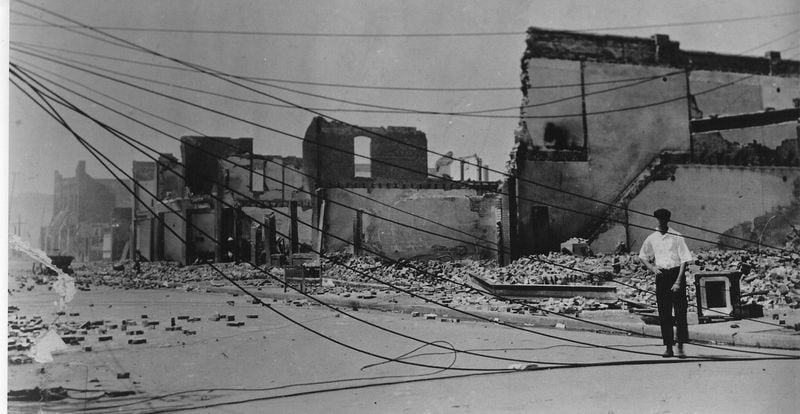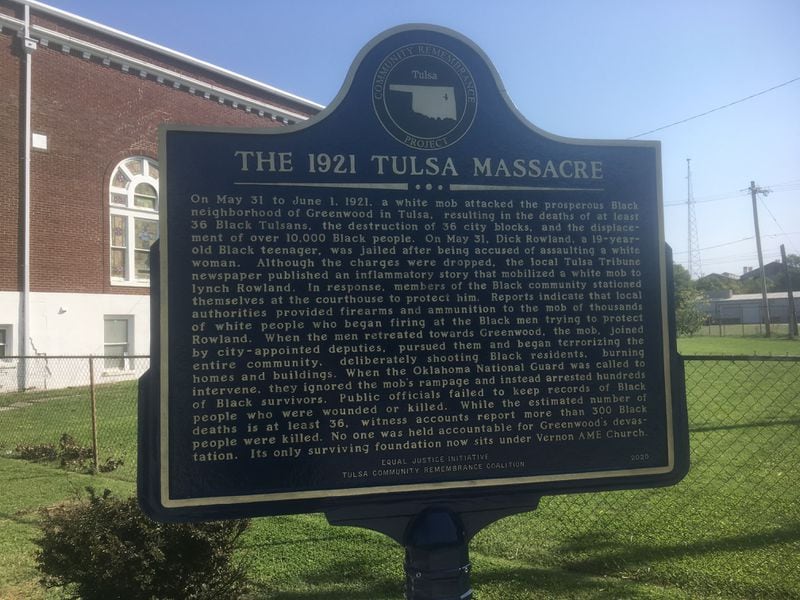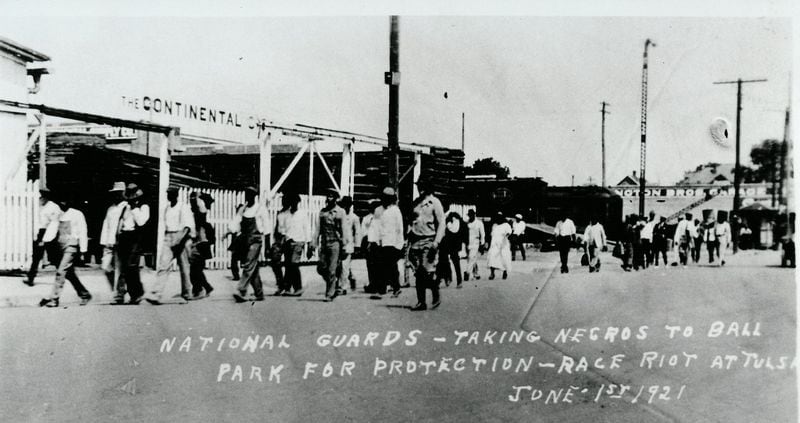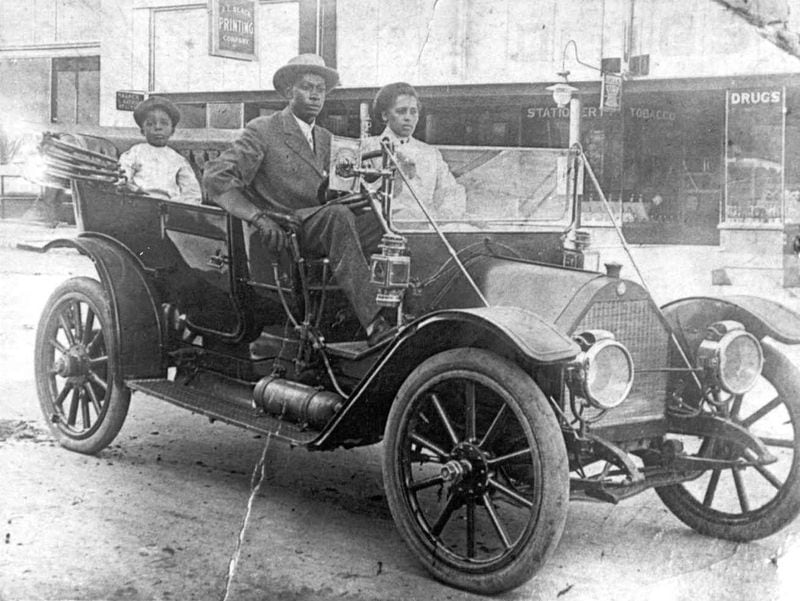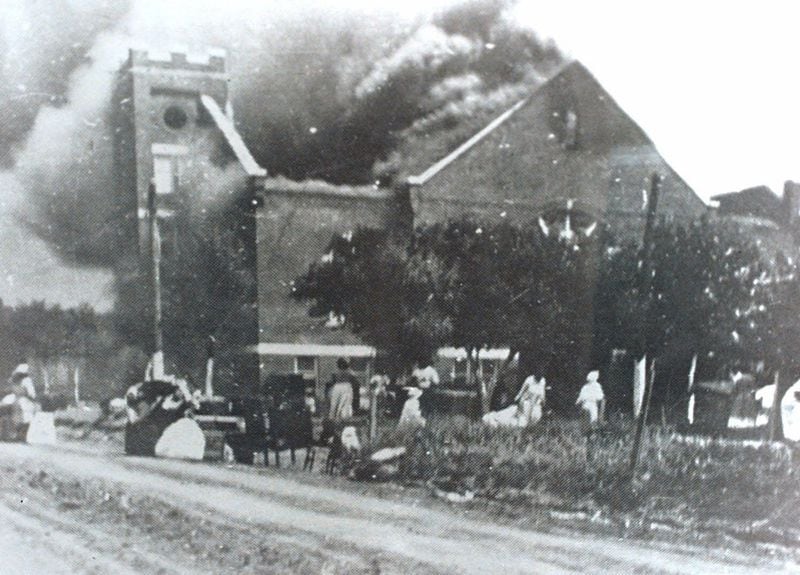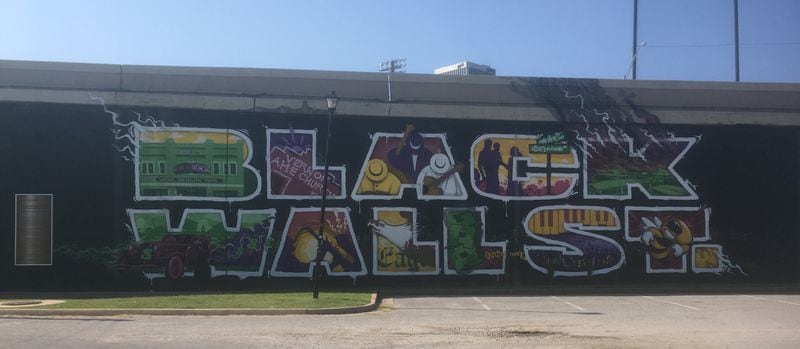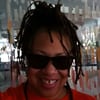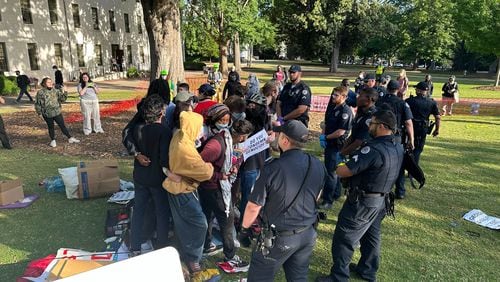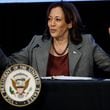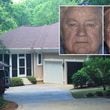From the AJC Sepia Black History Month Archives: This year is the 100th anniversary of one of the Tulsa Race Massacre, which saw a thriving Black community reduced to rubble. People were gunned down in front of their homes. Homes and businesses were burned to the ground. Today, the city is commemorating that bloody day a century ago by making sure people learn about the history and its aftermath, honoring those who lived there, and working on initiatives to promote unity and healing.
The Greenwood District on the north side of Tulsa, Oklahoma, was once nicknamed the “Negro Wall Street,” because of its thriving Black professional and business community.
Segregated Greenwood was home to 10,000 people that included laborers, domestics, teachers, business owners, doctors and lawyers. It had its own schools and churches.
Overnight, though, from the evening of May 31 through the afternoon of June 1, 1921, white mobs roamed the area, destroying, looting and killing whatever or whomever was in their path. An estimated 300 people died.
RELATED: Read AJC Sepia’s full Black History Month Series
A Black veteran, thinking the time serving his country would save him, put on his World War I uniform and stepped outside. He was shot dead. A nationally renowned physician, Dr. A.C. Jackson, was also killed when he stepped out on his porch with his arms raised.
It’s been called the Tulsa Race Riots or the Greenwood Race Massacre.
Today, nearly 100 years later, the 1921 Tulsa Race Massacre Centennial Commission is planning ways to educate the public and commemorate the incident. There are plans to take exhibits into the schools and to honor victims and survivors of the massacre.
In 14 hours, 35 square blocks in Greenwood, which is now commonly referred to as “Black Wall Street,” were decimated.
“Race riot sounds like Black folk and white folk were fighting each other, and that’s not what happened,” said Emory University professor Carolyn Anderson, author of “White Rage: The Unspoken Truth of Our Racial Divide.” “There was incredible violence that rained down on Black people. Tulsa was in the same period of massive domestic terrorism as the Red Summer of 1919, the Klan coming back to power after ‘Birth of a Nation’ in 1915 and the 1924 National Origins Act. It was an era of unvarnished white supremacy.”
Nearly a century later, some details are still unknown.
What happened in Greenwood is considered one of the worse incidents of racial violence in U.S. history.
“Incidents like this were taking place around the county,” said Mechelle Brown, program coordinator for the Greenwood Cultural Center. “What made this different was the number of people killed and amount of damage done.”
RELATED: How 1906 race riots shaped Atlanta
RELATED: The Rosewood Massacre: How a lie destroyed a black town
RELATED: Fort Mose: This was the one Southern town where escaped slaves could live free
The incident was touched off on the afternoon of May 30, when a Black teenager, Dick Rowland, was riding in an elevator in the Drexel Building with a white woman named Sarah Page, who was the elevator’s operator, according to accounts on the Greenwood Cultural Center and the Tulsa Historical Society and Museum websites.
A store clerk heard Page cry out and contacted police. Rowland fled but was arrested the next day. Some say he may have tripped and accidentally bumped into Page. But the story grew and rumors spread that she was allegedly assaulted, though that was never substantiated.
According to a report by the Oklahoma Commission to Study the Tulsa Race Riot of 1921, after Rowland was arrested, angry whites gathered at the courthouse. Survivor and teacher W.D. Williams said when word spread in the Black community, armed blacks gathered to protect him. “There was a scuffle between a black and a white man, a shot rang out. The crowd scattered. It was about 10 a.m. A race riot had broken out,” Williams said.
“A lot of people felt that he was innocent,” she said.
Tulsa, at the time, was riding an oil boom.
The Black consciousness was also awakening. The war had ended years earlier, and many African-American men had returned home after being stationed in Europe, where they were more accepted.
Experts say there was also underlying resentment in the white community, many of whom referred to the area as “Little Africa.”
“There was a sense of anger at black achievement,” said Emory’s Anderson. “America needs that narrative of Black pathology that Blacks don’t want to work, they’re lazy, they don’t like school. Then you see Blacks who have degrees, who have successful businesses that are thriving and who are actually doing that whole American dream thing.”
Experts say law enforcement armed whites and did little to protect Black residents. Some whites who were deputized reportedly participated in the rioting, according to several accounts. Martial law was declared and thousands of African-Americans were taken into “protective” custody and held at the Convention Hall and the Fairgrounds.
In a yellowed manuscript discovered several years ago, B.C. Franklin, a lawyer and father of John Hope Franklin, a historian and activist, detailed what he witnessed:
"I could see planes circling in mid-air. They grew in number and hummed, darted and dipped low. I could hear something like hail falling upon the top of my office building. Down East Archer, I saw the old Mid-Way hotel on fire, burning from its top, and then another and another and another building began to burn from their top," according to an article in Smithsonian magazine about its discovery
Hannibal B. Johnson, an Oklahoma author, attorney, consultant and expert on Greenwood, where his office is located, said he thinks private planes were used to drop gasoline or incendiary devices.
“Authoritative sources on the issue say it’s undisputed that airplanes were used during the course of the riot, whether you believe the official version that planes were surveying the area to see what was going on or that they were dropping incendiary devices like nitroglycerin or kerosene,” Johnson said. “Almost certainly, someone in one of those planes dropped something that caused buildings to burn more rapidly and brilliantly.”
After the Tulsa violence, some Blacks left for good. Others stayed to rebuild. Those who stayed had to deal with insurance companies that didn’t want to pay because of “riot” clauses in their policies, and new building codes that made it harder for property owners to start over.
Still, they did and in 1925, the area hosted Booker T. Washington’s National Negro Business League’s national conference, “which I think is remarkable, four years after the devastation,” said Johnson.
“There are people in Oklahoma who have not heard of this, and that’s a problem,” said John Franklin, a senior manager in the office of external affairs at the National Museum of African American History and Culture in Washington, D.C., and grandson of B.C. Franklin. “Forget reconciliation. I’m talking about repressed history.”
Credit: Jennifer Brett
Credit: Jennifer Brett
BLACK HISTORY MONTH
Throughout February, we’ll spotlight a different African-American pioneer in the daily Living section Mondays through Thursdays and Saturdays, and in the Metro section on Fridays and Sundays. Go to ajc.com/news/martin-luther-king-jr for more subscriber exclusives on people, places and organizations that have changed the world, and to see videos on the African-American pioneer featured here each day.
